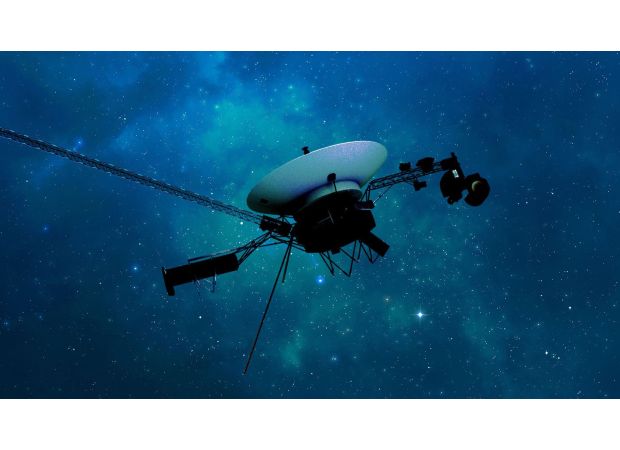A spacecraft turns on a radio transmitter after 40 years from a distance of 24 billion kms.
After losing contact, NASA has re-established communication with the 47-year-old Voyager 1 spacecraft, but it still faces challenges.

NASA has finally reestablished contact with the iconic Voyager 1 spacecraft, but things are still uncertain for the 47-year-old mission. After experiencing a technical issue that caused a communication blackout, engineers are working tirelessly to understand what went wrong and get the spacecraft back on track.
Voyager 1, launched in 1977, is now using a radio transmitter that it hasn't relied on since 1981 to stay connected with its team on Earth. As the spacecraft continues to age, engineers have been shutting off components to conserve power. Despite these challenges, Voyager 1 has managed to send back valuable data from a staggering 24 billion kilometers away.
But the recent technical issue is just one of many that the aging spacecraft has faced in the past few months. However, the team at NASA has been able to come up with creative solutions to keep Voyager 1 on its journey through the unknown reaches of space.
One of these solutions involves sending commands to Voyager 1 to turn on its heaters, which can help reverse the effects of radiation damage on the spacecraft's components. These commands are relayed through NASA's Deep Space Network, a system of radio antennas that allows the agency to communicate with Voyager 1 and other spacecraft in our solar system.
However, on October 16, when a command was sent to turn on the heaters, something triggered the spacecraft's fault protection system, causing it to shut off non-essential systems to conserve power. This led to a days-long blackout in communication between Voyager 1 and Earth.
The team at NASA managed to locate the spacecraft's response signal on October 18, but the following day, communication appeared to have stopped completely. It is believed that the fault protection system was triggered two more times, causing Voyager 1 to switch to its less powerful S-band transmitter.
Despite the challenges, the team at NASA remains determined to find a solution and get Voyager 1 back to using its more powerful X-band transmitter. However, they are proceeding with caution to ensure the safety of the spacecraft.
In the meantime, they have been able to confirm that the S-band transmitter is still working, albeit with limited capabilities. This is just one of the many innovative solutions that NASA has had to come up with to overcome communication challenges with Voyager 1. From firing up old thrusters to keep the antenna pointed at Earth to finding a fix for a computer glitch, the team is determined to keep the historic mission going strong.


